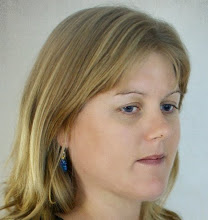Phew! I have now created an "aggregator" (sounds very energetic doesn't it!). I was apprehensive but found it to be a very easy process. Without google reader it would be very time consuming to keep up with more than a few blogs.
When I checked I was very excited to see two comments on my own blog. It is a wonderfully social and supportive feeling to receive feedback from my professional colleagues. To return the favour I will endeavour to spend more time commenting on others' blogs over the coming weeks.
Monday, March 29, 2010
Mathematics Applications
 This authentic rainbow biscuit was hand-rolled by my friend's two year old daughter. How does this apply to maths? Well I guess she had to mentally appraise the length of the tubes when rolling to make sure they would meet relatively evenly at the edges.
This authentic rainbow biscuit was hand-rolled by my friend's two year old daughter. How does this apply to maths? Well I guess she had to mentally appraise the length of the tubes when rolling to make sure they would meet relatively evenly at the edges.I recently read in the Courier Mail (article by Tanya Chilcott) that the draft national curriculum includes four hours per week of maths for Prep to Year 10 students. Most schools apparently currently teach around 3.5 hours per week of maths. With this increased focus it will become even more important to create engaging maths lessons out of traditionally non-maths topics. Some examples I can think of are:
1. Maths in cooking: eg. "doubling the recipe" or other such multiplications, creating shapes and measuring perimeters, areas and volume of various foods and liquids, GST calculations on grocery purchases, logistics of food distribution, storage and use.
2. Maths in Health and Physical Education: eg. classroom statistics on student lap times, graphs of heart rate vs height and weight.
There must be many more examples, please contribute your ideas !
If maths lessons become less focused on following a textbook and more integrated into 'everyday topics,' such as cooking and physical education, students may be better able to relate to the topic. Now comes the crux of my blog posting, I hope you are still reading. Most maths textbooks have student exercises and answers can be found at the back of the textbook. Maths problems created by the teacher that are based on 'everyday topics' will not have pre-calculated answers at the back of a book. Students will have to become proficient at gauging the correctness of their own work and use strategies to check for accuracy.
One way to encourage students to self-check is to publish their work. When I become a learning manager my students may have to use a class blog. One student each week will be responsible for posting their answers to set homework questions onto the class blog. Other students may then check their own work against the answers posted to the blog and provide comment if they believe the answer should be different. Among other Habits of Mind (see Dimension 5 of Marzano and Pickering's "Dimensions of Learning: Teacher's Manual," 1997), this process may build student's critical thinking skills.
Saturday, March 27, 2010
The First Post
 If the Last Post is associated with Anzac biscuits, I am going to associate this First Post with....Green cake!
If the Last Post is associated with Anzac biscuits, I am going to associate this First Post with....Green cake!This blog has been created:
- to make my ICT education authentic by creating my first blog, and;
- to share ideas about learning and teaching in preparation for becoming a learning manager.
Welcome to Food for Thought!
Subscribe to:
Posts (Atom)
